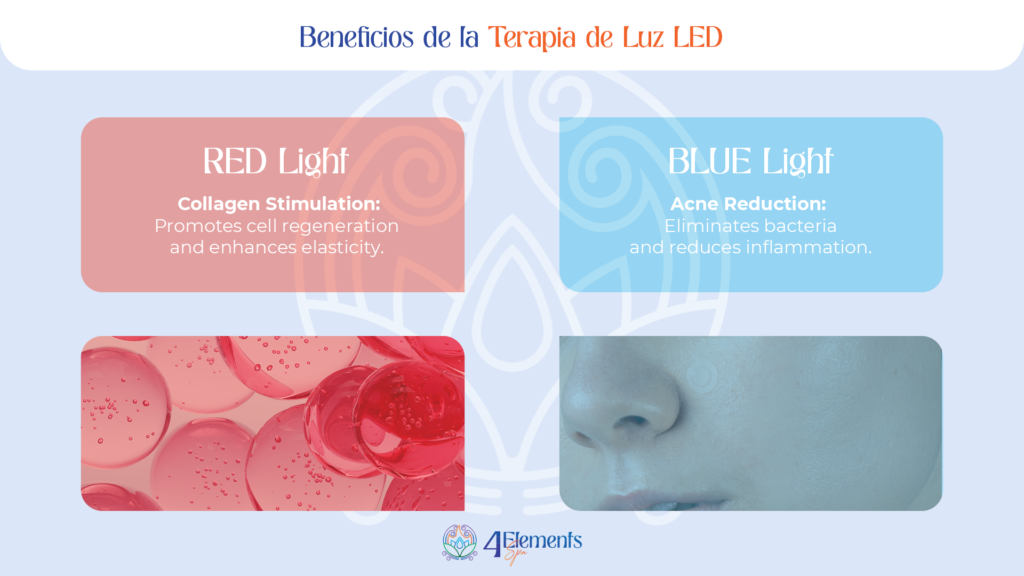Table of Contents
- Introduction to Anti-Aging and Innovation
- Modern Technologies in Anti-Aging Treatments
- LED Light-Based Therapies
- Microneedling and Radiofrequency
- The Importance of Transdermal Solutions
- Personalized Treatments Based on Skin Needs
- Post-Treatment Care: Ensuring Lasting Results
- Sunscreen Use: Protection Against UV Rays
- Constant Hydration: Keeping Skin Healthy
- Use of Soothing and Repairing Products
- Gentle Cleansing Routine
- Conclusion
- Frequently Asked Questions
Introduction to Anti-Aging and Innovation
The aesthetics industry has undergone a revolution in the last decade with the incorporation of innovative technologies aimed at combating the signs of aging. Anti-aging is no longer just about eliminating wrinkles; it’s now about revitalizing the skin, improving its quality, and restoring elasticity to achieve natural and lasting results. Modern treatments have evolved to adapt to different skin types and have significantly improved in terms of safety and effectiveness. This trend responds to the growing consumer interest in non-invasive methods that can be easily integrated into their personal care routines. In the following sections, we will explore some of the most effective modern technologies in the field of anti-aging, focusing on those making a significant impact in skincare.
Modern Technologies in Anti-Aging Treatments
LED Light-Based Therapies
LED light therapy has become a preferred alternative for those seeking non-invasive anti-aging treatments. Based on different wavelengths of light, this technology has proven effective in stimulating collagen and reducing inflammation. LED lights, especially red and blue, work at a cellular level, promoting skin renewal and improving texture and brightness.
Benefits of LED Light Therapy:
- Collagen stimulation: Helps in cellular regeneration and improves skin elasticity.
- Reduction of fine wrinkles: Gradually diminishes expression lines.
- Acne treatment: Blue light, in particular, is effective in eliminating acne-causing bacteria.
- Non-invasive: Allows for regular sessions without affecting daily life.
The key to the success of LED light therapy lies in its ability to adapt to different skin issues. With an adequate frequency of sessions, significant improvements can be seen in just a few weeks.

Microneedling and Radiofrequency
Microneedling, combined with radiofrequency, enhances rejuvenating effects on the skin. Microneedles create micro-channels on the skin’s surface, facilitating the penetration of active ingredients and stimulating a natural healing response that results in collagen and elastin production.
Advantages of Radiofrequency and Microneedling:
- Deep penetration: Microneedling technology allows for deeper skin layers to be reached.
- Increased collagen: Radiofrequency, applied after microneedling, generates controlled heat that reinforces collagen creation and improves firmness.
- Scar and deep wrinkle treatment: Ideal for patients with acne scars, stretch marks, or deep wrinkles.
This dual technology is especially appealing for those seeking to improve skin quality without undergoing surgical treatments. Moreover, by stimulating cell renewal, the results are progressive and natural.
The Importance of Transdermal Solutions
Transdermal solutions have gained prominence as an effective complement to anti-aging treatments. These solutions use advanced technologies to optimize the absorption of active ingredients into the deeper layers of the skin, providing faster and more effective results.
Some of the most notable transdermal technologies include the use of nano-encapsulated and liposomal delivery systems, which safely transport active ingredients through the skin. This allows ingredients such as retinol, peptides, and antioxidants to act more effectively on cells, contributing to comprehensive rejuvenation.
For more details on these solutions, check out this article on transdermal solutions, where the latest industry trends are explored.
Personalized Treatments Based on Skin Needs
Personalizing treatments according to the characteristics of each skin type is essential to maximize benefits and avoid unnecessary risks. Each skin type responds differently to anti-aging treatments, so performing a prior assessment is crucial. This assessment helps identify factors such as skin sensitivity, pigmentation tendencies, and texture, influencing the choice of the appropriate technology and products.
Personalizing anti-aging treatments allows specialists to optimize results and offer a skincare experience that is both effective and safe.
Post-Treatment Care: Ensuring Lasting Results
After undergoing an anti-aging treatment, the skin is in a state of regeneration and may be more susceptible to external damage, such as UV radiation, dehydration, and exposure to pollutants. For this reason, it’s crucial to follow specific care guidelines that not only protect the skin but also help prolong the results obtained during the treatment. Below are essential post-treatment care recommendations to ensure the skin recovers properly and remains in its best condition.
Sunscreen Use: Protection Against UV Rays
One of the primary post-treatment care steps is the application of sunscreen. UV radiation is one of the external factors that can cause the most damage to the skin, especially after a treatment that may leave it more exposed or sensitive. Skin subjected to procedures like fractional laser, microneedling, or any treatment involving cellular regeneration tends to be more prone to hyperpigmentation if not properly protected.
Constant Hydration: Keeping Skin Healthy
Hydration is key for any skin type, but it is even more critical after undergoing anti-aging treatments. The skin may temporarily dry out or become dehydrated following procedures like laser treatments, microdermabrasion, or radiofrequency therapies. Proper hydration helps restore the skin’s barrier and maintain elasticity, which is vital for prolonging treatment results.
Use of Soothing and Repairing Products
Treated skin may experience redness, sensitivity, and, in some cases, mild inflammation. That’s why using soothing and repairing products is essential to accelerate the recovery process and reduce possible discomfort. These products are formulated with active ingredients that not only calm the skin but also promote regeneration.
Gentle Cleansing Routine
After an anti-aging treatment, it’s crucial to maintain a gentle cleansing routine that doesn’t compromise the skin’s barrier. Cleansing is important to remove impurities and residues, but it’s necessary to use non-aggressive products.
For more detailed information on post-treatment care, check out this post-treatment care guide, which covers the best methods to preserve results.
Conclusion
Modern technologies in anti-aging treatments have opened up a range of possibilities for those looking to improve skin quality safely and effectively. From LED light therapies to radiofrequency and fractional laser technologies, advancements have made it possible to achieve visible and long-lasting results without invasive procedures. It’s essential to combine these technologies with transdermal solutions and personalized care to ensure a comprehensive experience that addresses each person’s specific needs. Additionally, following post-treatment recommendations is key to maximizing benefits and prolonging results. Ultimately, advancements in anti-aging technology allow us to enjoy healthier, younger-looking skin, improving both appearance and self-confidence. As these innovations continue to evolve, we can expect increasingly effective and accessible treatments for everyone.
Frequently Asked Questions
- What are the most effective anti-aging treatments? The most effective treatments can vary depending on skin type, age, and specific patient needs. However, among the most recommended and successful technologies are LED light therapy, microneedling with radiofrequency, and high-intensity focused ultrasound. It’s important to note that the success of an anti-aging treatment also depends on the professional’s experience, prior skin assessment, and correct application of technologies.
- How long do anti-aging treatment effects last? Results can last from months to years, depending on the type of treatment, post-treatment care, and individual factors such as genetics and lifestyle. Proper post-treatment follow-up, such as using sunscreen and maintaining constant hydration, can help prolong these benefits.
- Are non-invasive anti-aging treatments safe? In general, non-invasive anti-aging treatments are considered safe as long as they are performed by trained professionals in specialized centers. Each technology, such as microneedling with radiofrequency, LED light therapy, or fractional lasers, is approved by health regulatory bodies and has been subject to clinical studies to verify its safety and effectiveness. Typically, non-invasive treatments have a quick recovery time and pose few risks of severe side effects when performed correctly.
- When is it recommended to start anti-aging treatments? There is no specific age to start anti-aging treatments. However, many specialists suggest taking a preventive approach from the age of 25 or 30, as collagen production begins to decrease around this time. Early treatments tend to be milder, such as LED light therapy to stimulate collagen or using specific products containing retinol or hyaluronic acid.
- What care should I take after a rejuvenation treatment? After an anti-aging treatment, the skin may be more sensitive and vulnerable, so it’s essential to follow specific care guidelines to ensure proper recovery and prolong the results obtained. Among the main recommended care steps are: using sunscreen, avoiding direct sun exposure, constant hydration, and following the specialist’s instructions.


